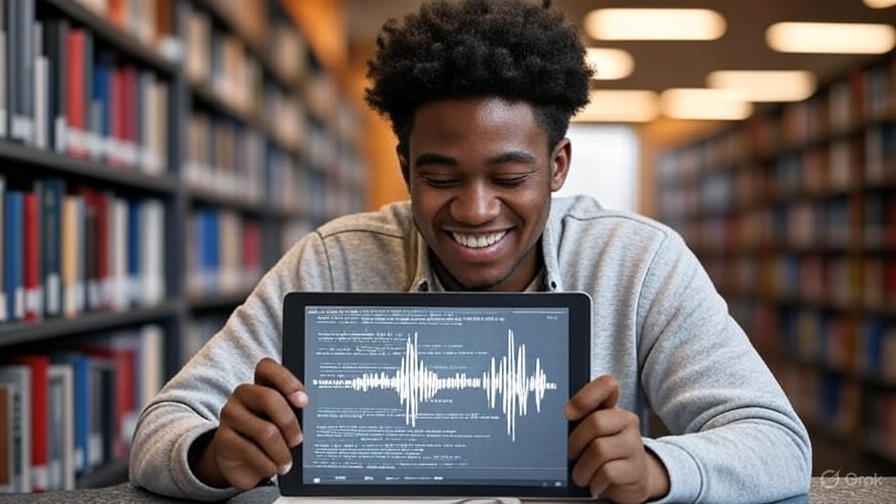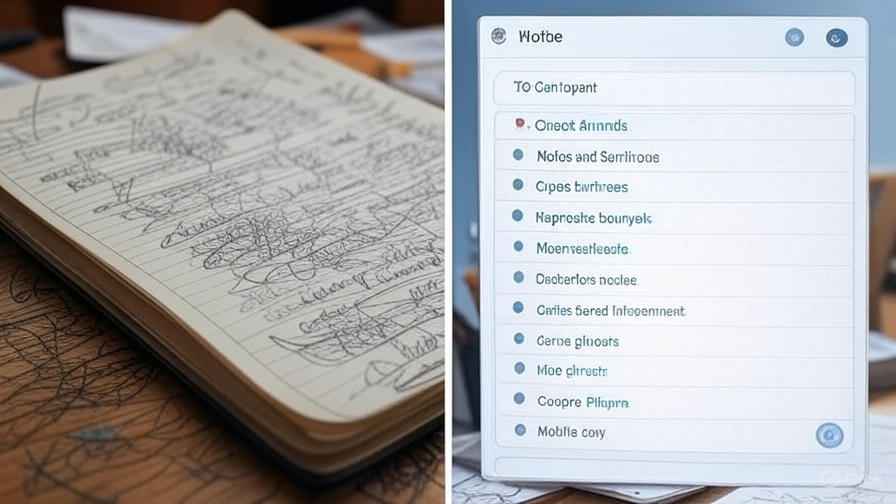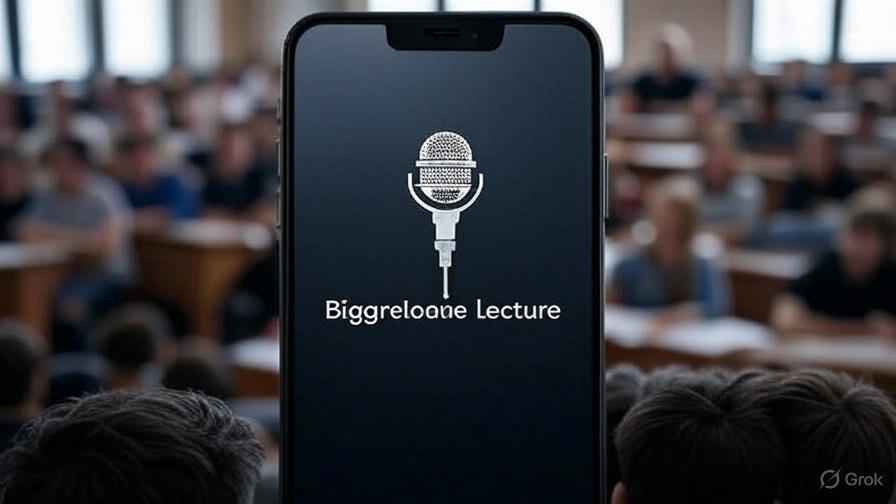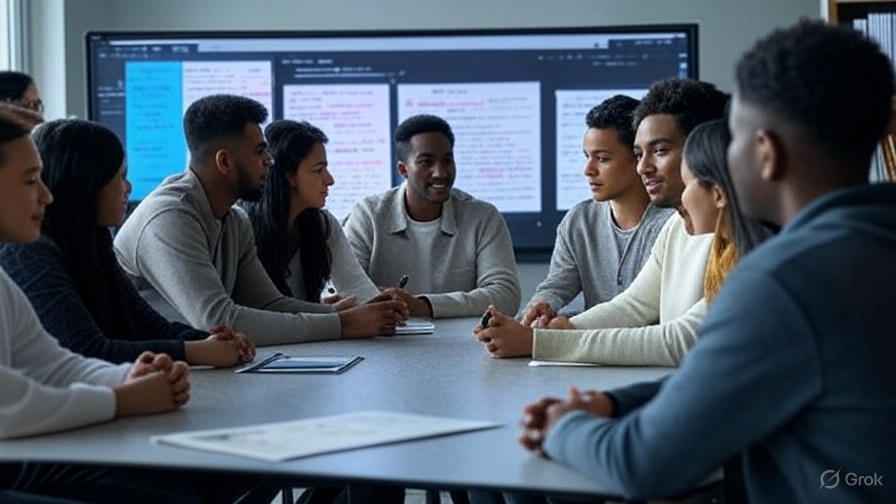In today’s fast-paced academic world, keeping up with lectures and meticulously jotting down notes can feel like an Olympic sport. From lightning-speed professors to complex concepts, students often find themselves torn between actively listening and accurately transcribing. What if there was a way to effortlessly capture every crucial detail without the stress of missing a beat? Enter the revolutionary AI tool that converts lecture audio to notes automatically – a game-changer for anyone looking to optimize their learning and maximize productivity.
For years, students have grappled with the tedious task of manual note-taking. Hours spent re-listening to recordings, pausing, rewinding, and typing out every spoken word is not only time-consuming but also incredibly draining. This struggle is precisely why the advent of an AI tool that converts lecture audio to notes is so monumental. Imagine walking out of a lecture, knowing that a perfectly organized, searchable, and comprehensive set of notes is already being generated for you. This isn’t a futuristic fantasy; it’s a present-day reality transforming how we approach education.
This comprehensive guide will dive deep into the world of AI-powered note-taking. We’ll explore the incredible benefits, discuss the top tools available, and provide actionable tips to integrate this technology seamlessly into your study routine. Whether you’re a high school student, an undergraduate, or a lifelong learner, understanding how to leverage an AI tool that converts lecture audio to notes can unlock unprecedented academic success and free up valuable time for deeper understanding and critical thinking.
The Unseen Burden of Traditional Note-Taking: Why We Need a Change
Think back to your last demanding lecture. Were you furiously scribbling, trying to keep pace with the speaker, only to realize later that your notes were a messy jumble of half-finished sentences and illegible abbreviations? Or perhaps you decided to just listen, trusting your memory, only to find key details elusive when it came time to review. This is the common dilemma faced by millions.
Traditional note-taking, while fundamental to learning, comes with significant drawbacks:
- Cognitive Overload: Trying to simultaneously listen, process, and write can overwhelm the brain, leading to reduced comprehension of the actual lecture content.
Trying to simultaneously listen, process, and write can overwhelm the brain, leading to reduced comprehension of the actual lecture content. The cognitive burden of taking notes while trying to comprehend new information is a well-documented challenge. If you want to dive deeper into this topic, you can read more about cognitive load in learning.
- Incomplete Information: It’s virtually impossible for even the fastest note-taker to capture every single word, nuance, or detail, especially during complex explanations.
- Time-Consuming Review: Manual notes often require extensive reorganization, clarification, and supplementation after the lecture, adding hours to study time.
- Accessibility Issues: Students with certain learning disabilities or physical challenges may find traditional note-taking methods particularly difficult or impossible.
- Loss of Context: When focused purely on writing, students might miss the lecturer’s body language, intonation, or spontaneous insights that add crucial context.
These challenges aren’t minor inconveniences; they are genuine barriers to effective learning and academic performance. The need for a more efficient, accurate, and less burdensome method of capturing lecture content is clear. This is where an AI tool that converts lecture audio to notes steps in as a revolutionary solution.
“The burden of juggling multiple academic tasks, from meticulous note-taking to writing flawless essays, can be immense for students. To streamline your workflow, check out our guide on finding the best AI essay writer for college students.”

How an AI Tool That Converts Lecture Audio to Notes Works Its Magic
At its core, an AI tool that converts lecture audio to notes leverages sophisticated artificial intelligence and machine learning algorithms. While the specific technologies vary between platforms, the general process involves several key steps:
- Audio Input: You upload an audio file (MP3, WAV, M4A, etc.) of your lecture, or in some cases, the tool can record live audio directly.
- Speech-to-Text Transcription: This is the foundational step. The AI model, trained on vast datasets of human speech, converts the spoken words into written text. Advanced models can distinguish between multiple speakers and filter out background noise.
- Natural Language Processing (NLP): Once transcribed, NLP algorithms kick in. These algorithms analyze the text to understand its meaning, identify key themes, and extract important information.
- Summarization and Organization: This is where the “notes” aspect truly shines. The AI can summarize lengthy sections, identify action items, highlight key terms, and even organize the content into structured headings, bullet points, and paragraphs. Some tools can even identify questions and answers.
- Output Generation: Finally, the tool presents you with polished, organized notes. These can often be exported in various formats (PDF, Word, TXT) and are frequently searchable within the platform.
The beauty of this process lies in its automation and accuracy. By offloading the transcription and organizational heavy lifting to AI, students are free to focus on what truly matters: understanding and engaging with the lecture material.
Once transcribed, NLP algorithms kick in… The AI can summarize lengthy sections, identify action items, highlight key terms, and even organize the content into structured headings. To learn more about this powerful feature, read our article on AI tools to summarize research papers.”

Beyond Transcription: The Multifaceted Benefits of an AI Tool That Converts Lecture Audio to Notes
While the primary function of an AI tool that converts lecture audio to notes is clear, its advantages extend far beyond simple transcription. These tools offer a holistic approach to academic support:
- Unmatched Accuracy: AI transcription, especially with advanced models, is incredibly accurate, often surpassing human transcription in speed and consistency. This means fewer errors and a more reliable set of notes.
- Time Savings: This is perhaps the most significant benefit. What once took hours of manual re-listening and typing can now be done in minutes, freeing up valuable study time.
- Enhanced Comprehension: With the pressure of note-taking removed, you can actively listen, ask questions, and engage more deeply with the lecture content, leading to better understanding.
- Improved Retention: Organized, searchable notes make reviewing much more efficient. You can quickly find specific topics, revisit challenging concepts, and prepare more effectively for exams.
- Accessibility for All: For students with hearing impairments, learning disabilities, or those whose primary language differs from the lecturer’s, these tools are invaluable for creating accessible learning materials.
- Searchable Content: Imagine needing to find a specific example mentioned three weeks ago. With AI-generated notes, a quick keyword search will instantly locate the relevant section, something nearly impossible with handwritten notes.
- Customizable Output: Many tools allow you to edit, annotate, and customize the generated notes, tailoring them to your personal study style.
- Eco-Friendly: Reduces the need for paper and printing, contributing to a greener study approach.
The impact of an AI tool that converts lecture audio to notes on a student’s academic journey cannot be overstated. It’s not just a convenience; it’s a powerful enabler of more effective and equitable learning.
Top Contenders: The Best AI Tool That Converts Lecture Audio to Notes
The market for AI-powered note-taking tools is growing rapidly, with new players emerging regularly. While the “best” tool often depends on individual needs and budget, here are some of the leading options currently available that serve as an excellent AI tool that converts lecture audio to notes:
1. Otter.ai
Otter.ai is arguably one of the most popular and widely recognized AI tool that converts lecture audio to notes. It offers excellent real-time transcription and a robust set of features specifically designed for meetings, interviews, and, crucially, lectures. Visit Otter.ai
- Key Features: Live transcription, speaker identification, automatic summarization, keyword extraction, and the ability to add photos to notes. It integrates well with Zoom, Google Meet, and Microsoft Teams.
- Pros: Highly accurate, generous free tier, user-friendly interface, excellent search functionality.
- Cons: Free tier has limitations on monthly transcription minutes; some advanced features are behind a paywall.
- Ideal For: Students who need reliable real-time transcription and robust organizational features.
2. Notta
Notta positions itself as a powerful speech-to-text solution perfect for converting long audio recordings into searchable text. It’s a strong contender as an AI tool that converts lecture audio to notes. Learn more about Notta
- Key Features: High transcription accuracy in multiple languages, live recording, audio file import, AI summaries, and the ability to export in various formats (TXT, DOCX, SRT, PDF).
- Pros: Good for long lectures, supports many languages, decent free trial.
- Cons: Free plan is limited, some users report occasional minor formatting issues.
- Ideal For: Multilingual students and those who need to transcribe very long audio files.
3. Happy Scribe
While primarily known for its professional transcription and subtitling services, Happy Scribe also offers an automated transcription service that can be utilized as an effective AI tool that converts lecture audio to notes. Check out Happy Scribe
- Key Features: Fast turnaround for automated transcription, support for numerous languages, and various export options.
- Pros: High accuracy, professional-grade output, suitable for academic research.
- Cons: More geared towards professional use, pricing can be higher for extensive use compared to student-focused tools.
- Ideal For: Students requiring extremely high accuracy for critical academic work, possibly in research or thesis writing.
4. Trint
Trint offers an advanced platform for transcribing and editing audio and video. Its powerful editor allows users to verify transcripts quickly, making it a powerful AI tool that converts lecture audio to notes. Explore Trint’s features
- Key Features: Interactive editor to correct transcripts, speaker identification, timestamping, and collaboration features.
- Pros: Excellent for fine-tuning transcripts, good for teams or study groups.
- Cons: Can be more expensive than other options, might be overkill for basic lecture transcription needs.
- Ideal For: Students who want to extensively edit and refine their automatically generated notes or collaborate on them.
5. ScribeSense
Designed with students in mind, ScribeSense aims to simplify the note-taking process. It’s built as a dedicated AI tool that converts lecture audio to notes.
- Key Features: Audio recording, instant transcription, key point extraction, and note organization specifically tailored for academic content.
- Pros: Student-centric design, often more affordable or with student discounts.
- Cons: May not have as many advanced features as enterprise-level transcription services.
- Ideal For: Students looking for a straightforward, budget-friendly solution focused purely on lecture notes.
6. Google Recorder (for Pixel Phones)
If you own a Google Pixel phone, Google Recorder is an incredibly powerful, built-in AI tool that converts lecture audio to notes and it’s completely free.
- Key Features: Real-time transcription, speaker separation, sound event identification (e.g., applause, music), and easy sharing. All processing is done on-device.
- Pros: Free, highly accurate, works offline, excellent search capabilities.
- Cons: Only available on Google Pixel phones, not a cross-platform solution.
- Ideal For: Pixel users who need a seamless, on-device solution without subscription fees.
7. Rev.com (Automated Transcription)
While Rev is renowned for its human transcription services, their automated transcription engine is a strong contender as an AI tool that converts lecture audio to notes.
- Key Features: High accuracy for automated transcription, fast turnaround, and various export formats.
- Pros: Trusted brand, consistent quality, good for one-off transcriptions.
- Cons: Pay-as-you-go model can become expensive for frequent use, less feature-rich than dedicated note-taking apps.
- Ideal For: Students who occasionally need high-quality automated transcripts and are willing to pay per minute.
8. Tactiq
Tactiq is primarily focused on transcribing virtual meetings, but its robust features make it a powerful AI tool that converts lecture audio to notes for online lectures or webinars.
- Key Features: Real-time transcription for Zoom, Google Meet, MS Teams, automatic summaries, action items, and highlights.
- Pros: Excellent for online learning environments, integrates directly with video conferencing tools.
- Cons: Less useful for in-person lectures without a separate recording method.
- Ideal For: Students attending online lectures or webinars who want integrated transcription and summarization.
9. Speechify (via its Transcription feature)
While Speechify is best known for its text-to-speech capabilities, it has also expanded into transcription, offering a potential solution as an AI tool that converts lecture audio to notes.
- Key Features: High-quality transcription, often integrated with its broader suite of learning tools.
- Pros: Part of a larger ecosystem of productivity tools, potentially beneficial for users already using Speechify.
- Cons: Transcription might not be its primary focus, so specific note-taking features might be less developed than dedicated apps.
- Ideal For: Users already invested in the Speechify ecosystem looking for an integrated transcription solution.

How to Maximize the Effectiveness of Your AI Tool That Converts Lecture Audio to Notes
Simply using an AI tool that converts lecture audio to notes isn’t enough; to truly revolutionize your study habits, you need to use it strategically.
- Record High-Quality Audio: The better the audio input, the more accurate the transcription. Use an external microphone if possible, sit close to the lecturer, and minimize background noise.
- Inform Your Lecturer (If Recording): Always check your institution’s policies and inform your lecturer if you plan to record their lectures. Transparency is key.
- Use It As a Listening Aid, Not a Replacement: Don’t disengage during the lecture just because the AI is taking notes. Actively listen, process information, and engage with the material. The AI provides the raw material; your brain processes it.
- Annotate and Edit Immediately: AI is smart, but it’s not perfect. Review the generated notes shortly after the lecture. Correct any transcription errors, add your own insights, questions, and connections. This active engagement reinforces learning.
- Leverage Summarization Features: If your chosen AI tool that converts lecture audio to notes offers summarization, use it to quickly grasp the main points before diving into the detailed transcript.
- Integrate with Your Study Workflow: Export notes to your preferred document editor, flashcard app, or cloud storage. Make them part of your regular review process.
- Practice Keyword Spotting: When reviewing, pay attention to the keywords the AI highlights or those you’d search for later. This helps in future retrieval.
By adopting these practices, you transform an AI tool from a mere transcription service into a powerful ally in your academic journey.
Integrate with Your Study Workflow… By transforming your notes into flashcards, you can prepare more effectively for exams. Discover some of the best tools in our guide on AI flashcard generators for exam preparation.”

The Future of Learning: More Than Just an AI Tool That Converts Lecture Audio to Notes
The current capabilities of an AI tool that converts lecture audio to notes are impressive, but the future promises even more sophisticated applications. Imagine tools that don’t just transcribe and summarize, but also:
- Identify and flag concepts you struggle with: Based on your past performance or reading habits.
- Generate personalized quizzes: Directly from your lecture notes.
- Create visual mind maps: Automatically connecting ideas and concepts discussed in the lecture.
- Integrate with textbook readings: Cross-referencing lecture points with relevant sections in your course materials.
- Translate lectures in real-time: Breaking down language barriers in international academic settings.
The convergence of AI, machine learning, and natural language processing is rapidly transforming education. An AI tool that converts lecture audio to notes is just the beginning of a new era where technology empowers every student to learn more effectively, efficiently, and equitably.
This technology isn’t about making learning easier in a way that bypasses effort; rather, it’s about optimizing the effort students put in. By automating the mechanical aspects of note-taking, it frees up cognitive resources for deeper understanding, critical thinking, and creative problem-solving – the true hallmarks of effective learning.
The current capabilities of an AI tool that converts lecture audio to notes are impressive, but the future promises even more sophisticated applications… and even more robust tools for tasks like paraphrasing and avoiding plagiarism. Check out our guide on free AI tools for paraphrasing and avoiding plagiarism.”
FAQ: Your Questions About AI Lecture Note Tools Answered
Here are some frequently asked questions about using an AI tool that converts lecture audio to notes:
Q1: What is an AI tool that converts lecture audio to notes?
A1: It’s an application or software that uses artificial intelligence to automatically transcribe spoken words from a lecture audio file into written text, often also organizing and summarizing the content into structured notes.
Q2: How accurate is an AI tool that converts lecture audio to notes?
A2: The accuracy varies by tool and audio quality, but leading AI models can achieve transcription accuracy of 90-95% or even higher, especially with clear audio. It’s always good practice to review and edit the generated notes.
Q3: Can an AI tool that converts lecture audio to notes work in real-time?
A3: Yes, many advanced tools like Otter.ai and Google Recorder offer real-time transcription, allowing you to see notes being generated as the lecture progresses. This can be a significant advantage for active participation.
Q4: Is it ethical to use an AI tool that converts lecture audio to notes without permission?
A4: While the legality varies by region, it’s generally best practice and ethical to inform your lecturer if you plan to record and transcribe their lectures. Always check your institution’s specific policies on recording lectures.
Q5: What are the main benefits of using an AI tool that converts lecture audio to notes for students?
A5: The main benefits include saving significant time on manual note-taking, improving comprehension by allowing active listening, ensuring comprehensive and searchable notes, and providing accessibility for diverse learners.
Q6: Can an AI tool that converts lecture audio to notes summarize the content?
A6: Many sophisticated AI tools go beyond mere transcription and can provide automatic summaries, identify key points, and extract important action items, making your review process much more efficient.
Q7: How much does an AI tool that converts lecture audio to notes cost?
A7: Pricing varies widely. Some tools offer free tiers with limited minutes, while others have subscription models (monthly or annually) or pay-as-you-go options. Free options like Google Recorder exist for specific devices.
Q8: What should I look for when choosing the best AI tool that converts lecture audio to notes?
A8: Consider transcription accuracy, real-time capabilities, summarization features, export options, speaker identification, language support, user-friendliness, pricing, and integration with other tools you use.
Conclusion: Empowering Your Academic Journey with an AI Tool That Converts Lecture Audio to Notes
The landscape of education is constantly evolving, and technology plays an increasingly vital role in empowering students. The emergence of an AI tool that converts lecture audio to notes represents a significant leap forward, offering an unparalleled opportunity to transform how we engage with and retain lecture content.
No longer do students need to choose between active listening and meticulous note-taking. These intelligent tools provide a bridge, allowing for deeper engagement during the lecture and a comprehensive, organized record for later review. They free up precious time, reduce cognitive load, and enhance the overall learning experience for everyone.
Embracing an AI tool that converts lecture audio to notes is more than just adopting new software; it’s about strategically investing in your academic efficiency and success. As you navigate the complexities of your studies, remember that these tools are designed to be your allies, helping you achieve more with less stress. Experiment with the options available, find what works best for your unique study style, and unlock a new level of academic productivity. The future of note-taking is here, and it’s smarter, faster, and more effective than ever before.